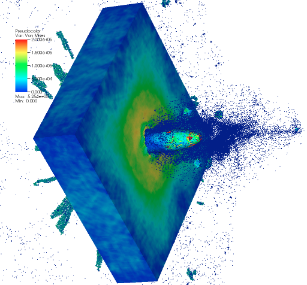Functionally and Geometrically Ordered Ti Armor
Project Summary
Titanium and its alloys have many superior characteristics which make it desirable for use in defense systems. Among these are: high strength, light weight, and corrosion resistance. Ti-6Al-4V provides more efficient ballistic protection than conventional steel armor, but it is far less efficient than state-of-the-art ceramic armor. The ceramics exhibit high compressive strength, very high hardness, and light weight. The increased availability of recently developed low-cost titanium powders to fabricate structural components using solid state powder metallurgy processing technology provides an unprecedented opportunity to engineer advanced composite armor structures which combine titanium and ceramic materials.

In this project we investigated two types of composites: 1) Functionally Graded Composites, which consist of two or more blended phases where the ratios can be continuously graded or locally varied and 2) Layered Complex Geometry Hybrid Composites, made by Additive Manufacturing, which consist of discrete strata of different materials with geometrically complex interfaces. Computational modeling is used to assist in the design of composite structures, choice of materials, and prediction of ballistic performance characteristics. Computational design optimization is coupled with High Performance Computing in order to explore a wide space of design possibilities design enabled by additive manufacturing.
The goal is to design, fabricate, model, and test new titanium composites that have unique properties and performance capabilities for use in critical defense applications. The new materials with improved protective properties may be applied to a broad range of land, air, and naval systems.